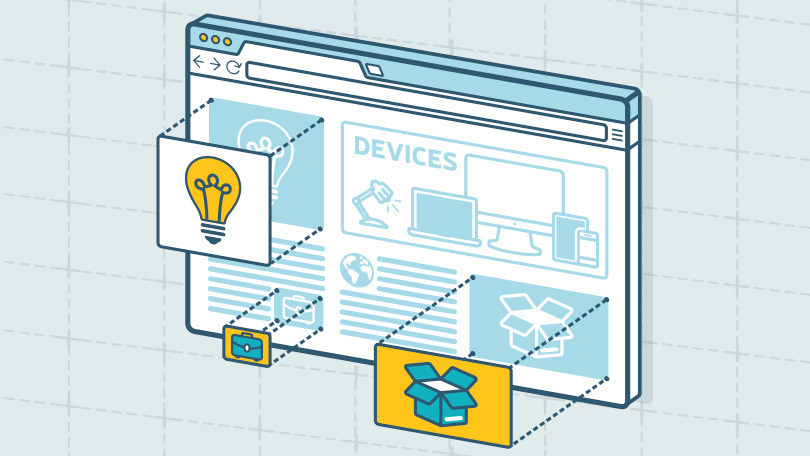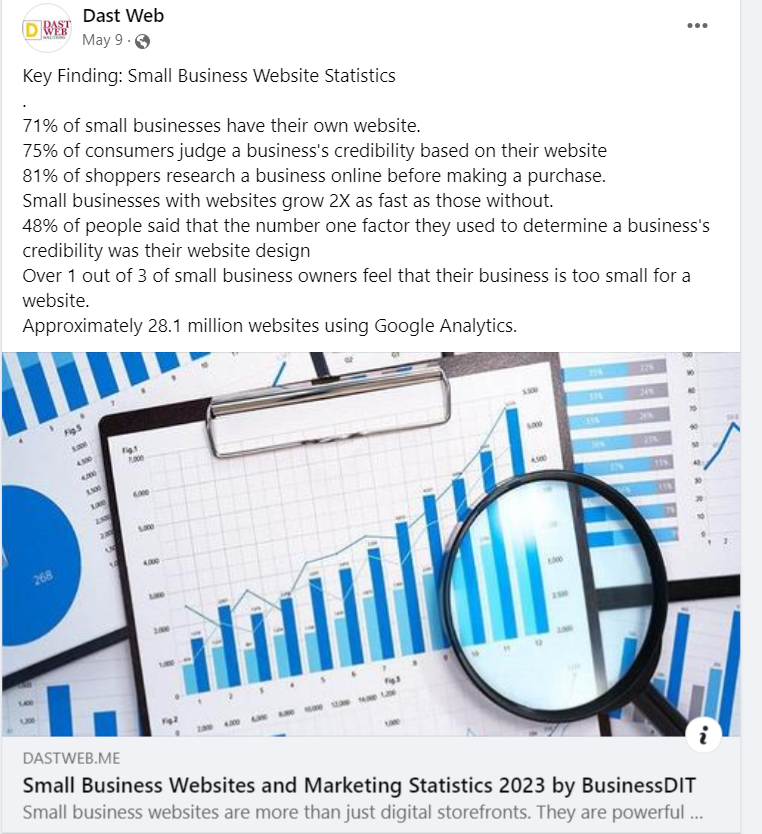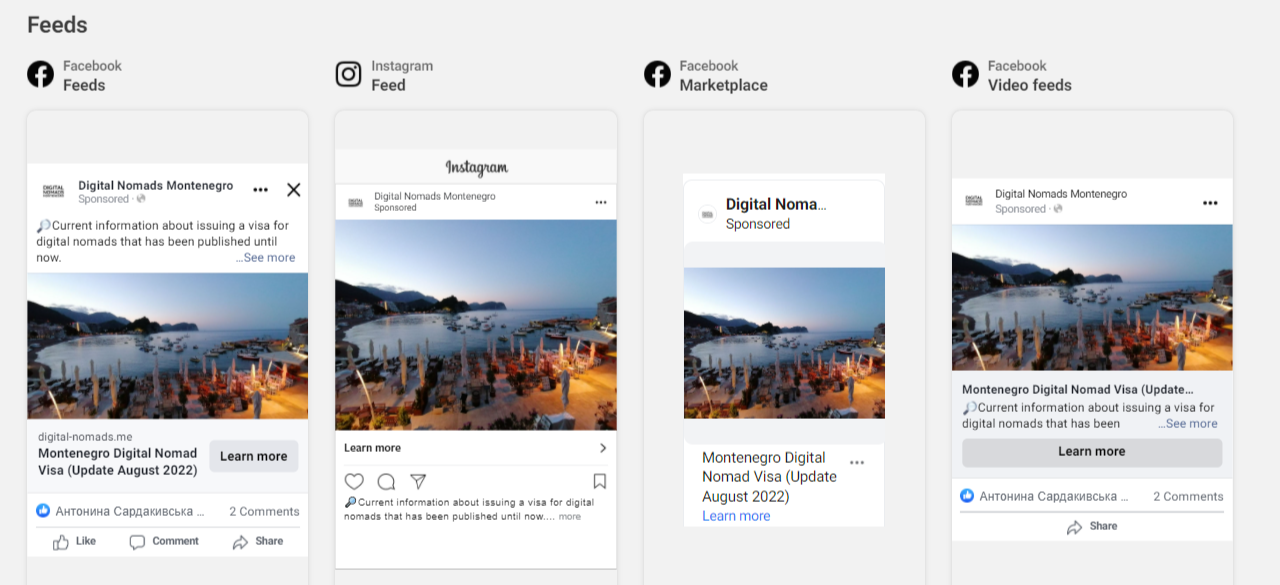Why content marketing is important for small businesses and how to get the right strategy
Good content – such as blog posts, informative videos and more – is used to encourage customers to make a purchase, gently guiding them towards the right solution for their needs
Whether you create a blog for your website, post helpful tutorials on YouTube, or write ebooks and guides, you too can use content marketing to grow your brand.
What is Content Marketing?
Content Marketing is a type of marketing strategy that involves creating and distributing valuable, relevant and informative content to attract a target audience and encourage them to make a purchase.
"Copywriting/Copy - represents an important element of content marketing, the art of writing text (copy) that sells. Copywriting is not fancy writing full of stylistic figures, metaphors, adjectives... ("Shine in full splendor this summer with magical..."). While writing about a product, it is not good to think about the product, but about the person who uses it (that's how the "copy that sells") is created".
This form of marketing does not explicitly promote a brand, but instead stimulates consumer interest in its product or service. The idea is that the more value you offer consumers in the form of expert knowledge, the more interested they will be in buying your product. The main goal is to tell the story of the product, present the product through its benefits, and answer the questions and parts that most interest them.
It presents the knowledge, expertise and authority of your company in the activity you represent.
It builds your credibility, helping you gain the trust of consumers.
Builds brand awareness by putting your brand on the web.
It boosts your website's SEO so you can be found by new customers.
It builds a bridge of trust with existing customers, thus motivating them to buy again.
Brings your business closer to new potential customers and markets
It promotes your website for free.
Research shows that 70% of Internet users want to learn more about a product through Content Marketing
1. Content marketing on the Web
Web content marketing refers to any material you publish online, but more specifically, it refers to your web pages. A strong online content marketing strategy will help you rank higher on the search engine results pages (SERPs) and get you in front of the right people at the right time.
2. Content Marketing on social networks
With over 4.2 billion global social media users, it's easy to understand why so many businesses are investing in social media marketing. There are a number of platforms (e.g. Facebook, Instagram, Pinterest, LinkedIn, Snapchat) you can work with and several ways you can create and share content on each (e.g. photos, live videos, pre-recorded videos, stories) ).
3. Infographic Content Marketing
Infographics present content, information and data in a graphic format that is easy to understand. With a mix of simple wording, short statements and clear images, infographics are a great way to communicate your content effectively. They work well if you're trying to boil down an educational and/or complex topic so that all audience members can understand it.
4. Content Marketing blog post
Blogs are a powerful type of inbound content and allow for a lot of creativity in terms of their purpose and subject matter. With a blog, you can do things like promote other internal and external content and blog articles through links, add social sharing buttons, and include product information.
More than 60 million people listen to podcasts on the Spotify and Apple Podcasts platforms. For this reason, many businesses and media have started to create and share their own podcasts.
Podcasts allow for a lot of creativity because they can be about any topic you choose. In addition, you determine other factors related to the podcast, such as the pacing of the episodes, who is on the podcast, where you advertise the podcast, and how long the episodes are.
6. Marketing video content
According to research, 73% of consumers say they prefer to learn about a brand's product or service through video. Additionally, video marketing can increase conversions, improve ROI, and help you build relationships with audience members. You can choose to share your video content on social media platforms, landing pages, or a marketing partner's website.
7. Content Marketing through paid ads
Paid ads can help you reach a large audience and allow you to position yourself in all the places you want to be seen — paid ads are especially useful when paired with inbound marketing. There are many places you can share paid ads, including social media, landing pages, banners, and sponsored content.
So these are just some of the most basic and common ways to distribute Content Marketing. What is important to note is that before distribution you must first determine the strategy for presenting your Content Marketing. Establishing a strategy is very important because with it you set the goals you want to achieve, define the audience you are addressing, and choose channels and methods of promotion according to where your previously defined audience is located.
Content Marketing Strategy
Building a proper content marketing strategy aims to build an organized system with specific goals, metrics and processes based on proven methods that will adjust the content exactly to the previously determined goals and results. In this way, brevity, style and way of writing are built and the direction that leads to previously defined goals.
A well-defined strategy plays a very important role in achieving the set goals. For this reason, it is necessary to work out the strategy in as much detail as possible and follow up as many already established elements as possible that achieve success in defining the strategy.
In order to tell the story of your brand before you start creating it, you must first know who you are telling your story to. So your first step will have to be to identify the audience you are trying to target with your content. There are several ways to do this:
Survey your existing customers
Research industry trends
Know who is definitely not your audience
Keep a close eye on who your competitors are targeting
Only after completing these tasks can you make plans for content creation. If you have spent time and energy to create quality content, and presented that content to an audience that is not interested in that area, you have wasted your time.
2. Positioning your brand and content
Clearly defined brand and product positioning will help you provide your audience with a consistent experience and build the right image across all your Content Marketing channels. These questions will help you think about your market positioning:
Who are my existing and potential customers and what are their goals, fears, desires?
Who are my biggest competitors and how do they market their brands?
What is the unique value of my brand? Something that makes you special (USP- Unique sailing proposition)
Solving which problems does your product help (what are the benefits of buying your product)?
What makes your product a better choice than the competition?
Use these guidelines to shape the main pillars of your brand story. A brand story is a summary of your company's history, mission, purpose and values. It can help you choose the right direction in your content marketing strategy, identifying the right messages and themes to translate with your content.
Focus on the following elements:
Your brand personality
Your brand purpose and core brand values
How your product and your content can help reinforce all of the above and empower your hero.
3. Content marketing mission statement and owned media value proposition
To establish your brand as a credible content publisher, define your media value proposition. It will help you find a point of differentiation in your content strategy and compete more effectively. To do this, answer the following questions:
What unique value are you providing your audience with your content?
What makes you stand out from other content creators?
Why should readers choose to follow your content channels?
Another important item to include in your strategy is your content marketing mission statement. It should summarize why you are creating the content and provide information about who can benefit from it.
Make sure your content marketing mission statement includes the following elements:
The audience you're creating your content for
Their goals and how your content will help achieve them
For example, "Our content is where digital marketing managers find multimedia information about SEO and content marketing to help their companies grow through organic channels
4.Action plan
Finally, you'll outline your top marketing campaigns and projects for the year and add them to your content plan. Think about how it will achieve the content marketing goals you previously set for your business.
This will allow you to think through every step of your content strategy. Be sure to include the following information:
Content formats you want to focus on
Top-level themes and campaigns with content
Channels for distribution and promotion of content

Content marketing small business website examples - Blog

The importance of small business websites through analysis and statistics by Businessdit - Blog

Why Content Marketing Matters by SEJ - Blog

Best Landing Page Examples & Why They Convert - Blog

16 reasons why your business needs a website - Blog
When you subscribe to the blog, we will send you an e-mail when there are new updates on the site so you wouldn't miss them.







